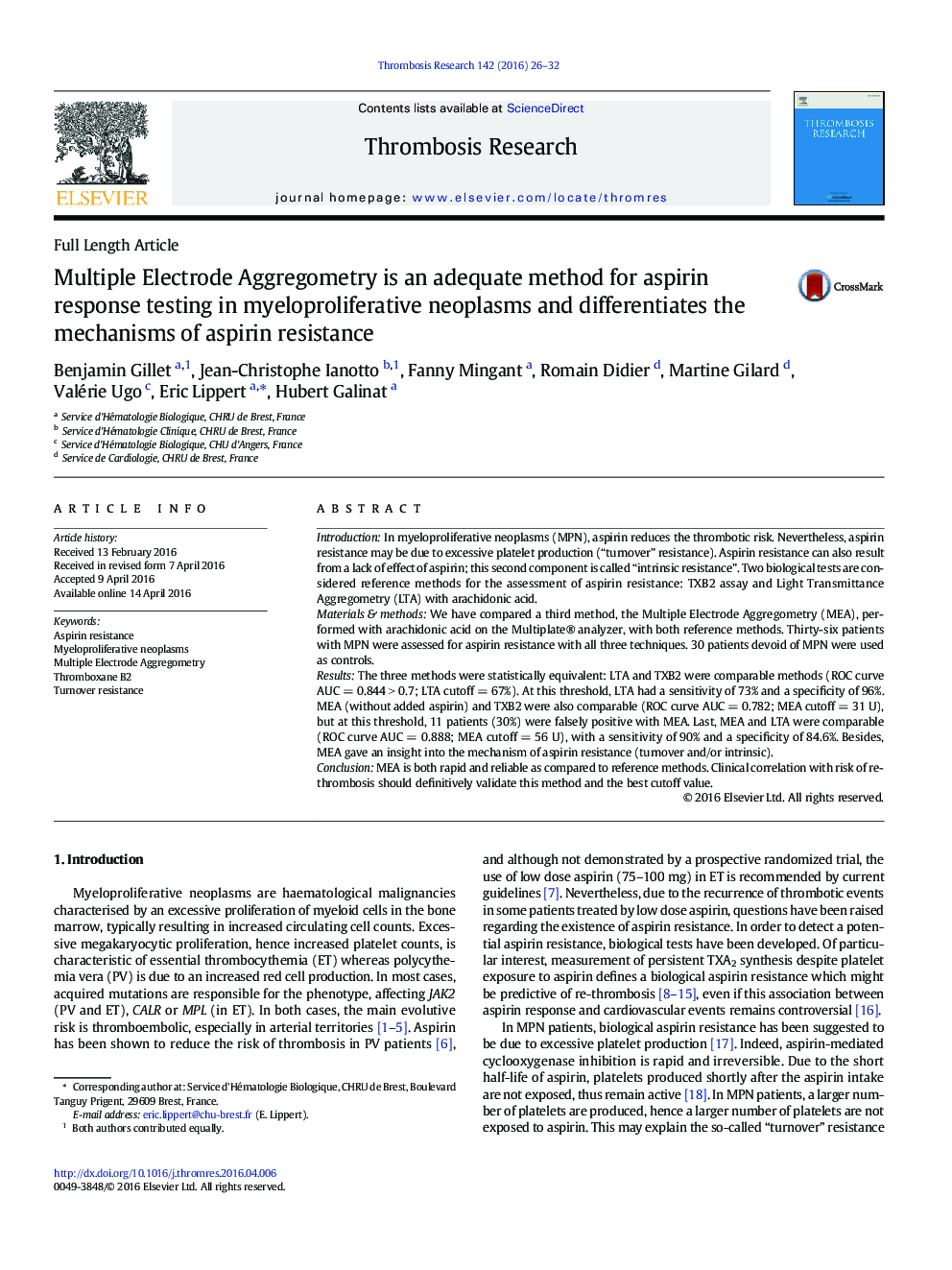| کد مقاله | کد نشریه | سال انتشار | مقاله انگلیسی | نسخه تمام متن |
|---|---|---|---|---|
| 6000520 | 1579201 | 2016 | 7 صفحه PDF | دانلود رایگان |

- MEA is comparable to reference methods for aspirin resistance assessment.
- MEA distinguishes turnover versus intrinsic resistance.
- Turnover resistance is predominant in patients with myeloproliferative neoplasms.
IntroductionIn myeloproliferative neoplasms (MPN), aspirin reduces the thrombotic risk. Nevertheless, aspirin resistance may be due to excessive platelet production (“turnover” resistance). Aspirin resistance can also result from a lack of effect of aspirin; this second component is called “intrinsic resistance”. Two biological tests are considered reference methods for the assessment of aspirin resistance: TXB2 assay and Light Transmittance Aggregometry (LTA) with arachidonic acid.Materials & methodsWe have compared a third method, the Multiple Electrode Aggregometry (MEA), performed with arachidonic acid on the Multiplate® analyzer, with both reference methods. Thirty-six patients with MPN were assessed for aspirin resistance with all three techniques. 30 patients devoid of MPN were used as controls.ResultsThe three methods were statistically equivalent: LTA and TXB2 were comparable methods (ROC curve AUC = 0.844 > 0.7; LTA cutoff = 67%). At this threshold, LTA had a sensitivity of 73% and a specificity of 96%. MEA (without added aspirin) and TXB2 were also comparable (ROC curve AUC = 0.782; MEA cutoff = 31 U), but at this threshold, 11 patients (30%) were falsely positive with MEA. Last, MEA and LTA were comparable (ROC curve AUC = 0.888; MEA cutoff = 56 U), with a sensitivity of 90% and a specificity of 84.6%. Besides, MEA gave an insight into the mechanism of aspirin resistance (turnover and/or intrinsic).ConclusionMEA is both rapid and reliable as compared to reference methods. Clinical correlation with risk of re-thrombosis should definitively validate this method and the best cutoff value.
Journal: Thrombosis Research - Volume 142, June 2016, Pages 26-32